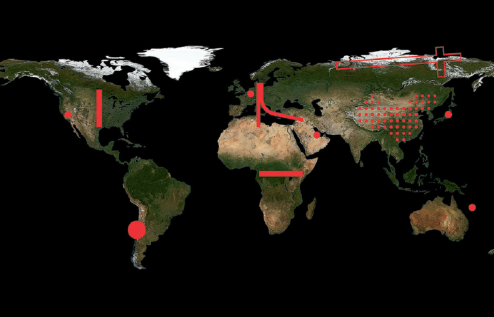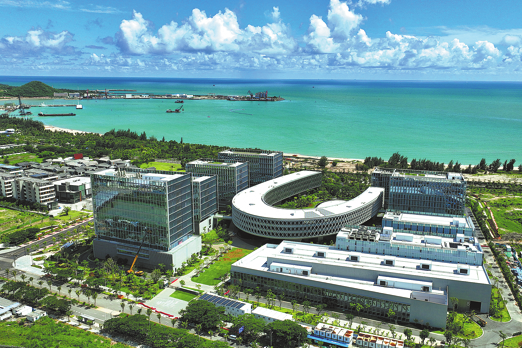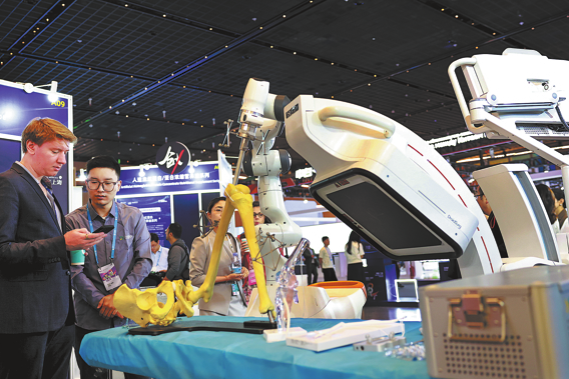Wild in the country
Renowned architect Rem Koolhaas foresees a new rural sublime at the Guggenheim

Dutch architect and Harvard professor Rem Koolhaas is not a man one typically associates with nature-but a new exhibition is set to change that. The Rotterdam-born head of OMA (the Office for Metropolitan Architecture, which he founded 45 years ago) and its experimental research arm AMO has made a name for dazzling, dizzying urban projects that emblazon their respective cities like exclamation marks: the CCTV Headquarters in Beijing, the Shenzhen Stock Exchange, the Garage Museum of Contemporary Art in Moscow, the Fondazione Prada in Milan and the Seattle Central Library.
Despite Koolhaas's innovative, avant-garde totems, he has somehow avoided the somewhat disparaging "starchitect" moniker directed at many of his contemporaries. His latest project, Countryside, The Future, is showing at the Guggenheim in New York until Aug 14. The exhibition sees him explore the radical changes happening in rural areas. Despite increasingly large numbers of the global population living and working in cities, these locations only account for two percent of the world's surface.
"In the past decades, I have noticed that while much of our energies and intelligence have been focused on the urban areas of the world-under the influence of global warming, the market economy, American tech companies, African and European initiatives, Chinese politics and other forces-the countryside has changed almost beyond recognition," says Koolhaas.
When the term "smart city" was coined in 2012, Koolhaas had noticed his interests moving in the opposite direction: "Through regular visits to a Swiss village-it was the sudden disappearance of cows that alerted me-I had begun to realize that, through an accumulation of discrete individual changes, the countryside was actually transforming more drastically than the city. The story of this transformation is largely untold-and it is particularly meaningful for AMO to present it in one of the world's great museums, in one of the world's densest cities."
Koolhaas has long called for greater rural awareness, and has even claimed that the obsession with cities has blinded people to what has been happening in the countryside, becoming a factor in the 2016 election of Donald Trump. To further his rural cause, the architect has enlisted students from Beijing's Central Academy of Fine Arts, Kenya's University of Nairobi, the Netherlands' Wageningen University and the US's Harvard Graduate School of Design.
The Guggenheim, for its part, says the exhibition "will mark a shift from a focus on the urban to the rural, remote, deserted, and wild territories collectively investigated here as 'countryside'". It aims to shed light on the urgent environmental, political and socio-economic changes facing the countryside in places such as China, California and South America.
The museum elaborates on the theme:"Countryside will offer speculation on the future through evidence of transition from a diverse range of sites by documenting examples from around the world as case studies, exposing the dramatic transformations that have taken place in the countryside while our attention has been collectively focused on the city."
For example, on the subject of Chinese trains cutting through the Kenyan landscape as part of President Xi Jinping's Belt and Road Initiative, Koolhaas says such developments "force Kenya to rethink its models of growth, shedding modernism's fixation on the megalopolis to experiment, instead with the 'village' as a way forward."
Topics under the microscope include artificial intelligence, global warming, political radicalization, mass and micro-migration, human-animal ecosystems, the impact of digital on the physical world, subsidies and even tax incentives. Experimental projects include glass-house farming, in which "superfluous" light from photosynthesis is removed, as well as a reappraisal of the amount of land needed to raise cattle. Nature has suddenly become the new architectural sublime-and architects of the future will confront a new reality when designing in rural areas.
Read more: cdlifestylepremium.com




Today's Top News
- Xi congratulates Jose Antonio Kast on election as Chilean president
- China urges opposition to Japanese official's remarks about possessing nuclear weapons
- Ukraine says latest peace talks with US, Europe 'productive'
- Asia's rise and Europe's structural decline
- Economic stability a pillar of China's national security
- Xi taps China's deep wisdom for global good






























